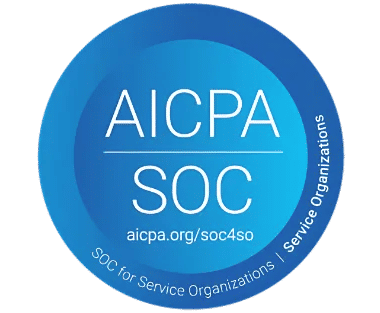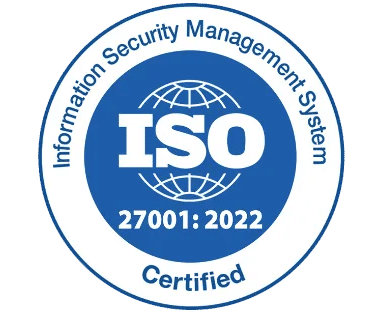Corporate Card vs Purchasing Card: Choose The Right One in 2025

Corporate cards are financial instruments provided by companies to employees for managing business-related expenses, such as travel, lodging, and client entertainment. Corporate cards not only simplify the payment process but also offer organizations enhanced control over spending by integrating automated expense tracking and reporting systems.
According to Deloitte (2025), companies that implement corporate card programs report a 30% reduction in manual expense processing time and a 25% improvement in compliance with expense policies, highlighting the critical role these tools play in streamlining expense management.
Purchasing cards, also known as procurement cards, are issued by financial institutions to businesses, enabling employees to make designated business purchases. These cards operate similarly to charge cards, allowing users to make payments while automatically recording transaction details, such as vendor information and amounts, for easier tracking.
When comparing P-cards and corporate cards, businesses can determine which option better aligns with their procurement and financial management needs.
Features of Corporate Cards:
Corporate credit cards are key financial tools for simplifying the accounts payable process. Businesses depend on them to handle everyday transactions and other needs efficiently. Here are 20 features that make corporate cards essential:
- Budget Management: Corporate cards can be linked directly to specific budgets for better expense control.
- Spending Limits: Individual cards can have predefined spending limits to avoid over-expenditure.
- Seamless Reconciliation: Corporate cards make reconciliation easy by automatically categorizing transactions for accurate bookkeeping.
- Approval for Large Transactions: High-value transactions require managerial approval, ensuring careful oversight.
- Real-Time Tracking: Administrators have real-time access to spending activity, ensuring transparency.
- Instant Alerts: Notifications are sent to administrators when spending thresholds are reached or exceeded.
- Multi-Use Capability: Corporate cards can be used for both in-store and online purchases.
- Customizable Cards: Assign different cards for specific employees or purposes, enhancing expense tracking.
- Centralized Payments: Payments for various company expenses can be streamlined to a single card program.
- Expense Categorization: Transactions are automatically categorized for simplified reporting.
- Cash Flow Management: Corporate cards allow businesses to control cash flow by managing payment schedules.
- Flexible Credit Limits: Corporate cards typically offer flexible credit limits based on the business’s needs.
- Employee Expense Tracking: Each employee’s expenses can be tracked individually, providing greater visibility.
- Integrated Reporting: Corporate cards integrate with accounting software to generate comprehensive reports.
- Security Features: Advanced security protocols, such as fraud detection, protect business funds.
- Employee Spending Controls: Specific card features can restrict certain types of purchases or merchants.
- Transaction History Access: Cardholders and administrators can easily view past transactions for auditing purposes.
- Simplified Tax Filing: The clear transaction data makes tax reporting and preparation easier.
- Cost Savings: Corporate cards can reduce transaction fees compared to traditional payment methods.
- Reward Programs: Some corporate cards offer reward programs, including cashback, air miles, or discounts on services. ;
Usage Scenarios of Corporate Cards:
Employee Travel Expenses:
Corporate cards simplify the management of employee travel costs, including flights, hotel accommodations, and meals. These expenses can be directly charged to the company card, reducing administrative overhead. Travel spending is tracked automatically, making reimbursement processes faster and more accurate. This eliminates the need for separate travel accounts or reimbursement forms.
Client Entertainment:
Corporate cards are frequently used to cover costs related to entertaining clients, such as meals, entertainment, or event tickets. Using the corporate card ensures these expenses are recorded and tracked properly for future audits and reporting. It also helps maintain a clear distinction between personal and business spending. This makes the process more efficient and transparent for the finance department.
Subscription Services:
Many companies subscribe to digital tools or services for business purposes, such as software platforms or online research subscriptions. Corporate cards allow businesses to keep track of recurring payments, ensuring they are accurately billed each month. This method simplifies the tracking of such expenses and helps prevent missed payments or overcharges. Additionally, these services can be easily integrated into accounting systems for streamlined reporting.
Office Supplies and Equipment:
Corporate cards are often used by employees to purchase office supplies like stationery, printers, or computers. By using a corporate card for these purchases, businesses can quickly track inventory and expenditure. This also helps prevent delays in obtaining necessary materials and ensures that purchases align with the company’s operational needs. The process is also more efficient than processing individual invoices for each item.
Event Hosting:
Corporate cards are a practical solution for handling costs related to hosting business events, such as conferences, seminars, or trade shows. This includes venue bookings, catering, transportation, and promotional materials. Using the corporate card consolidates these expenses into one account, making it easier to track and manage. This also ensures that event spending adheres to company budgets and policies.
Marketing and Advertising:
Corporate cards can be used to pay for marketing expenses, including digital advertising, print campaigns, or media buys. This simplifies the payment process and ensures that all marketing-related expenses are properly recorded. Tracking marketing costs through a corporate card also provides insights into spending patterns and helps ensure that budgets are not exceeded. It further enables better strategic planning for future marketing efforts.
Operational Expenses:
Corporate cards are convenient for managing various operational costs, such as utilities, service fees, and maintenance charges. Using corporate cards for these types of expenses helps maintain accurate records and prevents any missed or duplicate payments. It also provides businesses with a clearer view of their ongoing operational costs, which aids in budgeting and forecasting. Additionally, it reduces the administrative burden of processing multiple payments individually.
Employee Reimbursements:
When employees use their own funds for business purchases, they can use corporate cards to charge those expenses. This eliminates the need for separate reimbursement processes and ensures that all company-related purchases are tracked. The use of corporate cards speeds up the reimbursement process by directly linking the expenses to the company’s accounts. It also reduces errors in calculations or discrepancies that could arise in traditional reimbursement methods.
Vendor Payments:
Corporate cards are an efficient method for paying vendors for goods and services. This includes everything from raw materials to outsourced services that a company regularly uses. Using corporate cards for vendor payments ensures timely payments and reduces the need for manual invoicing and checks. Additionally, it allows for more streamlined accounting by consolidating vendor payments into one easy-to-manage transaction history.
- Training and Development Costs: Corporate cards are also used to pay for employee training programs, professional certifications, or industry conferences. These expenses are crucial for employee growth and business development, and using a corporate card makes the payment process more efficient. It simplifies the approval process, as employees can charge training fees directly to the card rather than submitting separate reimbursement claims. This ensures that all professional development expenses are properly tracked and accounted for.
Who Can Use Corporate Card
Company Executives and Senior Management:
Corporate cards are typically issued to high-ranking executives and senior management for handling their business expenses. These individuals often travel for business meetings, conferences, or client interactions, where corporate cards are used for booking flights, hotels, and meals. The card simplifies the management of expenses and ensures timely tracking for accounting. It also helps maintain company policies on spending while allowing executives to focus on their core responsibilities.
Employees with Specific Job Roles:
Corporate cards are assigned to employees whose job roles require regular purchases or spending on behalf of the company, such as those in sales, marketing, or operations. These employees often need access to funds to buy supplies, pay for client meetings, or cover expenses for projects they are managing. By using corporate cards, they can easily track spending and avoid delays in procurement. It also enables better budget management for department-specific expenses.
Finance and Accounting Teams:
Finance and accounting professionals who oversee financial transactions, budgeting, and reporting are often given corporate cards to manage company expenses. These teams can use the cards for payments related to services, subscriptions, or any necessary operational costs. Having access to a corporate card streamlines the payment process, making expense reporting more accurate. It also helps maintain financial oversight and ensure proper accounting practices.
Project Managers:
Corporate cards are sometimes given to project managers responsible for handling multiple aspects of a project, such as purchasing materials or arranging logistics. Project managers often have specific budgets that require careful management, and a corporate card helps track those expenses. The card ensures that all purchases align with project goals and adhere to the approved budget. It also minimizes the need for reimbursement processes, speeding up project execution.
Department Heads:
Heads of departments like HR, IT, or marketing may receive corporate cards for purchases related to their team’s activities. For example, the HR department may need to cover training costs, while the IT department may purchase software or hardware. Corporate cards enable these department heads to make timely purchases and keep expenses within the allocated budget. They also help simplify the process of tracking and reporting department-specific spending.
Sales Representatives:
Sales teams are often issued corporate cards to handle expenses related to client meetings, travel, and marketing initiatives. These cards are essential for managing daily expenses such as meals, transportation, and accommodation while on sales trips. Sales representatives benefit from using corporate cards as it streamlines their workflow and reduces the administrative burden of expense reports. It also ensures that their expenditures are within company guidelines and budgets.
Event Coordinators:
Employees tasked with organizing company events, such as conferences, seminars, or trade shows, are often granted corporate cards. These coordinators use the cards to pay for venue bookings, catering services, transportation, and promotional materials. Having access to a corporate card allows event coordinators to make quick, seamless payments without needing to go through approval processes for every single transaction. It also simplifies the task of managing large event budgets.
Procurement and Purchasing Teams:
Corporate cards are often issued to procurement professionals responsible for acquiring goods and services on behalf of the company. These teams handle everything from office supplies to large equipment purchases. Corporate cards help streamline the procurement process by reducing paperwork and speeding up payment. They also improve visibility into spending, ensuring that purchases stay within budget and comply with company guidelines.
- Travel and Logistics Personnel:
Employees who arrange travel and logistics for the company’s business activities often need corporate cards for booking flights, hotel rooms, or rental vehicles. These cards allow them to make timely and efficient bookings while maintaining full control over the company’s travel expenses. Travel and logistics staff benefit from corporate cards as it simplifies expense tracking and ensures compliance with corporate travel policies. Additionally, it reduces delays in managing the logistics of business travel.
- External Contractors and Consultants: In some cases, corporate cards may be issued to trusted contractors or consultants who need to make business-related purchases on behalf of the company. This may include paying for specialized tools, services, or travel costs for a specific project. Providing contractors with corporate cards allows for smoother transactions without the need for reimbursement processes. It also ensures that their spending aligns with the company’s financial policies and provides clear visibility into the project’s budget.
Benefits of Corporate Cards
Improved Expense Tracking:
Corporate cards allow businesses to easily track and categorize expenses. With detailed statements and integrated reporting, businesses can monitor spending in real time. This eliminates the need for manual expense reporting, saving time and reducing errors. Accurate tracking helps businesses maintain a clear view of their finances.
- Enhanced Financial Control:
Corporate cards offer features like spending limits and predefined budgets. These controls help businesses keep expenses within set parameters and avoid overspending. They provide transparency and give managers the authority to control and approve expenditures. This contributes to better financial oversight and improved budgeting accuracy.
- Streamlined Payment Processes:
Corporate cards simplify the payment process by consolidating multiple payments into a single monthly statement. This reduces administrative work associated with invoicing and payments to vendors. Streamlined payments help businesses manage cash flow more effectively. It also minimizes the risk of late payments or missed deadlines.
- Increased Efficiency and Time Savings:
Employees can make purchases quickly without needing to go through lengthy approval processes. Corporate cards expedite transactions by reducing paperwork and approval delays. This leads to greater operational efficiency. Employees can focus on their core tasks instead of managing expense reports or waiting for reimbursement.
- Access to Credit Lines:
Corporate cards often provide businesses with flexible credit limits based on their financial standing. This allows companies to access additional capital when necessary, such as for emergency purchases or business expansion. The credit line can help businesses manage cash flow, especially during slow periods. It also provides financial flexibility to meet business demands.
- Simplified Reconciliation and Reporting:
Corporate cards integrate with accounting software, making reconciliation easy. Businesses can automatically categorize expenses and generate reports for quick analysis. This integration ensures accurate financial records and reduces the time spent on manual data entry. It helps teams stay compliant with accounting standards and policies.
- Rewards and Perks:
Many corporate card programs offer rewards, such as cashback, travel points, or discounts on purchases. These benefits can be redeemed for business-related expenses, travel, or entertainment. Corporate cards can provide companies with valuable incentives for their spending. The rewards can contribute to overall cost savings or enhance employee satisfaction.
- Better Control Over Employee Spending:
Corporate cards can be assigned with specific spending limits and restrictions, ensuring employees stay within budget. Managers can set approval processes for large transactions or specific categories of spending. This gives businesses better control over employee purchases and ensures compliance with company policies. It reduces the risk of unauthorized or frivolous spending.
- Security and Fraud Protection:
Corporate cards are typically equipped with enhanced security features, such as fraud detection and purchase verification. These cards also offer protection against unauthorized transactions. In case of suspicious activity, businesses can easily block or report the transaction to prevent losses. This provides peace of mind and protects the company’s finances.
- Simplified Tax Filing: Detailed records of corporate card transactions make tax filing much easier. Businesses can easily access all necessary data, including receipts, transaction descriptions, and vendor information. The accurate financial records reduce the likelihood of errors during tax preparation. This streamlines the tax filing process and ensures compliance with tax regulations.
Scanning Receipts With a Corporate Card
- Use an Expense Management App:
Many expense management apps, like Expensify, Concur, or Zoho Expense, allow you to scan and upload receipts directly to your corporate card account. These apps typically feature an option to take a photo of your receipt. Once captured, the app will automatically extract details like vendor name, date, and amount.
- Take Clear Photos of Receipts:
When using your phone or an app to scan receipts, make sure the photo is clear, well-lit, and free from shadows or glare. The image should capture all key details, such as the date, total amount, and vendor information, for easy reference and future reporting.
- Match Receipts with Corporate Card Transactions:
After uploading the scanned receipts, ensure that they are properly matched with the relevant corporate card transactions. Most expense apps or software will automatically match receipts to the corresponding card transaction based on date and amount. This helps maintain accurate records.
- Tag Expenses by Category:
Some apps allow you to categorize each receipt by type of expense (e.g., travel, meals, office supplies). By tagging receipts with the appropriate category, it becomes easier to track spending in specific areas of the business. This ensures that your expense reports are organized and compliant with company policies.
- Review and Submit for Approval:
Once all receipts are scanned and matched with transactions, review the entries to ensure that all details are correct. Then, submit the expense report for approval (if required) by your manager or finance team. Many expense tools allow for automatic submission, which speeds up the approval process.
- Cloud Storage for Easy Access:
If you don’t use an expense management app, you can scan and store receipts digitally using a cloud storage service (like Google Drive, Dropbox, or OneDrive). Keep all receipts organized in folders by date or type of expense for easy retrieval when needed. You can also use scanning tools like Adobe Scan or Microsoft Lens to digitize paper receipts.
- Use Corporate Card Integration:
Some corporate cards come with their own expense management software or integrations that allow for receipt scanning directly linked to the card account. If your company provides such a service, simply follow the card’s instructions for scanning and attaching receipts to transactions. This reduces manual entry and streamlines the entire process.
- Set Up Automated Receipt Collection:
For frequent purchases, consider setting up automated receipt collection through email or online transactions. Some corporate card programs automatically send digital receipts directly to your expense management system. You can also forward any receipts emailed to you into your receipt storage system.
- Check for Receipt Expiry:
Ensure that scanned receipts are stored and processed promptly, as receipts may fade over time, especially paper ones. Digital storage eliminates the risk of losing receipts. Keep track of any receipt expiration policies in your company for tax or audit purposes.
- Reconcile and Review Regularly:
Make scanning receipts a routine task to ensure that all corporate card transactions are properly documented. Regularly reconcile your receipts with your credit card statements to avoid discrepancies and ensure financial accuracy. This ongoing practice helps keep the expense reporting process smooth and reduces last-minute rushes during audits or financial reviews.
Key Features of Purchase Cards
- Simplified Procurement Process:
P-cards streamline the purchasing process by allowing employees to make business-related purchases without requiring purchase orders or lengthy approval workflows. This makes it easier to buy office supplies, materials, or services. The process is faster and more efficient compared to traditional procurement methods. It helps employees focus on tasks without delays caused by administrative procedures.
- Spending Limits:
P-cards are typically issued with predefined spending limits to control and monitor expenses. These limits can be set by the company based on employee roles or specific departments. This ensures that purchases stay within budget and prevent unauthorized spending. It gives businesses more control over individual transaction amounts and departmental expenses.
- Vendor-Specific Restrictions:
Many P-cards come with restrictions that limit spending to specific vendors or merchant categories. For example, a P-card might only allow purchases from office supply stores or specific service providers. This helps businesses control where their money is spent and ensures compliance with purchasing policies. Restrictions can also prevent non-business-related spending.
- Automatic Transaction Tracking:
P-cards automatically track every transaction made, providing detailed records of each purchase. This eliminates the need for manual data entry and ensures accurate reporting. The detailed transaction data can be linked to accounting systems, providing greater visibility into company spending. It helps ensure financial transparency and easier reconciliation.
- Real-Time Visibility:
P-cards offer real-time visibility of transactions, allowing managers and finance teams to monitor expenses as they occur. This transparency helps companies identify any discrepancies early and prevents overspending. Real-time data also allows managers to make informed decisions about budget allocation. It keeps the entire team updated on current spending patterns.
- Simplified Expense Reporting:
P-cards reduce the time spent on expense reporting. Employees can quickly upload receipts or match them with the corresponding card transactions, streamlining the process. This makes monthly or quarterly reporting much faster and more accurate. Finance teams benefit from a smoother workflow with fewer errors and delays.
- Enhanced Security Features:
P-cards are equipped with advanced security measures to protect against fraud. Features like transaction limits, purchase category restrictions, and real-time monitoring reduce the risk of unauthorized spending. Some cards offer fraud detection tools that automatically flag suspicious transactions. This ensures the protection of company funds and improves financial safety.
- Reduced Paperwork and Administrative Burden:
With P-cards, the need for paper invoices and purchase orders is minimized. The automatic tracking and digital reporting features significantly reduce the amount of paperwork. Employees don’t need to manually submit paper receipts, and finance teams have a streamlined process for managing expenses. This helps organizations save time and resources.
- Cash Flow Management:
Since P-cards can be linked to a company’s primary credit account, they help businesses better manage cash flow. Companies can take advantage of credit terms, such as 30 or 60 days, to manage payments. This feature allows businesses to delay payments while still making necessary purchases. It provides businesses with more flexibility and control over their cash flow.
- Customizable for Different Departments:
P-cards can be customized for different departments, projects, or individual employees. Each card can be assigned with a specific budget and spending controls based on the department’s needs. This helps organizations ensure that every department stays within its allocated budget and avoids unnecessary spending. Customization allows for more efficient and tailored financial management across the business.
Usage Scenarios of Purchase Cards
- Office Supplies Procurement: Employees can use P-cards to buy everyday office supplies like paper, pens, printers, and other equipment. With predefined spending limits, businesses can control the amount spent per transaction. This scenario streamlines the purchasing process, reducing the time spent on manual orders and approvals. It helps maintain a continuous supply of necessary office items without delays.
- Travel and Accommodation: P-cards are often used to cover travel expenses such as flight bookings, hotel reservations, and car rentals for business trips. By using P-cards, employees can handle bookings directly, avoiding time-consuming reimbursement processes. The company can set specific travel-related guidelines to ensure spending is within corporate policies. This helps businesses manage travel budgets and track expenses easily.
- Vendor Payments for Services: P-cards can be used for payments to vendors providing services like consultancy, maintenance, or software subscriptions. The card’s ability to limit purchases to approved vendors ensures that payments are only made for authorized services. It eliminates the need for complex payment processes and simplifies accounting. This scenario helps businesses manage recurring service payments more efficiently.
- Marketing and Advertising Expenses: Marketing teams often use P-cards to pay for advertising services, digital campaigns, or social media promotions. P-cards can be assigned specific spending categories, making it easy to track marketing-related expenses. This ensures that marketing budgets are adhered to and that all spending is recorded correctly. The process helps the marketing teamwork without delays while maintaining financial control.
- Employee Training and Development: P-cards are used to pay for employee training programs, workshops, or conferences. Employees can easily register and make payments directly without needing to go through complex approval processes. This allows companies to invest in employee development without administrative burden. It also simplifies the tracking of employee training costs for budgeting purposes.
- Maintenance and Repairs: Facilities or operations managers can use P-cards to pay for routine maintenance, repairs, or emergency services. Whether it’s fixing equipment or servicing office infrastructure, P-cards provide a quick payment method. Spending limits and merchant restrictions can ensure that payments are made only to authorized service providers. This reduces the time spent on handling service-related transactions and invoices.
- Event and Conference Fees: P-cards can cover the costs of attending industry conferences, business events, or client meetings. Employees can pay for registration, event tickets, or event-related materials using their P-cards. This eliminates the need for reimbursements or additional paperwork. The company can track these expenses within the events or marketing budget for better financial oversight.
- Subscriptions and Software Licenses: P-cards are used to pay for subscriptions or licenses for software tools that are crucial for day-to-day operations. Whether for project management tools, CRM systems, or cloud services, P-cards streamline payments. Businesses can set usage limits based on subscriptions and prevent unauthorized purchases. This keeps software management simple and ensures timely renewals without service interruptions.
- Inventory and Equipment Purchases: Employees can use P-cards to purchase inventory or equipment required for ongoing projects or operations. This can include hardware, machinery, or raw materials needed in production or manufacturing. The ability to use P-cards for these purchases helps businesses manage stock levels efficiently. It ensures that the business can meet operational needs quickly without waiting for purchase order approvals.
- Client Gifts or Incentives: P-cards are often used to purchase client gifts, promotional items, or incentives for business partners.maintain client relationships with thoughtful, on-budget incentives.
Benefits of Purchase Cards
- Streamlined Procurement Process:
P-cards simplify and speed up the purchasing process by allowing employees to make purchases without the need for purchase orders or lengthy approval workflows. This reduces delays and improves efficiency. The process is quick, so employees can get what they need faster, without waiting for administrative approval. It also frees up time for the finance and procurement teams to focus on other tasks.
- Enhanced Control Over Spending:
P-cards come with customizable spending limits and restrictions, allowing businesses to set precise controls over each cardholder’s purchases. This helps prevent overspending and unauthorized purchases. Spending can be monitored in real-time, ensuring that purchases stay within budget. This control allows businesses to ensure compliance with company policies and maintain financial discipline.
- Increased Transparency and Accountability:
Every transaction made using a P-card is tracked and recorded automatically. This creates a detailed audit trail that helps businesses monitor expenses, improve accountability, and ensure compliance with procurement policies. Managers and finance teams can easily access transaction data, making financial oversight simpler and more transparent. It aids in internal audits and reduces discrepancies.
- Simplified Expense Reporting and Reconciliation:
P-cards eliminate the need for manual reporting and paper receipts, as transactions are automatically recorded and categorized. This simplifies the process of reconciling expenses and generating reports. Employees can quickly match receipts with transactions in real-time. The automated process saves time and reduces the risk of errors, ensuring smoother financial reporting.
- Improved Cash Flow Management:
P-cards offer businesses the flexibility to delay payments while still completing necessary purchases. This can help companies manage their cash flow more effectively, as payments are typically made after a grace period. The extended credit terms allow businesses to align payments with their revenue cycle. This feature helps businesses handle unexpected expenses or capitalize on opportunities without immediate financial pressure.
- Reduced Administrative Burden:
P-cards eliminate the need for complex paperwork, such as purchase orders, invoices, and manual approval processes. This reduces administrative overhead and simplifies procurement workflows. Finance and procurement teams spend less time on processing paperwork and more on strategic activities. The reduction in administrative tasks lowers the risk of errors and improves overall operational efficiency.
- Better Vendor and Merchant Management:
P-cards can be restricted to specific vendors or types of purchases, ensuring that businesses only spend money on authorized goods or services. This helps businesses maintain better relationships with preferred vendors while controlling where the money is spent. The cards also reduce the chances of fraud or non-compliant purchases, as the system tracks every transaction made. It encourages vendor accountability and smoothens vendor negotiations.
- Real-Time Transaction Monitoring:
With P-cards, businesses can monitor purchases in real time, giving managers and finance teams immediate visibility into company spending. Alerts and notifications can be set for high-value transactions or unusual spending patterns, helping prevent fraud and overspending. This visibility enables proactive management of budgets and ensures that there are no surprises at the end of the month. Managers can take action quickly to address any discrepancies.
- Cost Savings on Administration and Transactions:
P-cards significantly reduce the administrative cost of processing invoices, purchase orders, and reimbursements. The automatic tracking and reporting reduce the need for manual data entry and paperwork. Businesses also save on transaction fees that would otherwise be incurred by traditional payment methods, such as checks or wire transfers. Overall, this helps reduce operational costs and improve profitability.
- Increased Flexibility and Convenience:
P-cards provide employees with more flexibility to make purchases as needed, without waiting for approval or going through lengthy processes. This can be especially useful for departments that need to purchase supplies, services, or tools quickly to keep projects moving. The convenience of being able to make direct payments improves efficiency across teams. This flexibility allows businesses to operate more smoothly and respond to urgent needs faster.
Who Can Use Purchase Cards
- Employees with Purchasing Authority:
Employees who have been authorized to make purchases on behalf of the company can use P-cards. Typically, these employees are responsible for buying office supplies, materials, or services needed for their departments. The authorization ensures that the purchases align with company policies and budget limits. This delegation speeds up procurement without requiring multiple layers of approval.
- Department Heads or Managers:
Department managers or heads often use P-cards for purchasing goods and services required by their teams. They can make purchases based on their department’s needs while adhering to predefined spending limits. Having this authority allows managers to quickly procure necessary items without waiting for approval from higher-ups. This makes day-to-day operations more efficient.
- Procurement Teams:
The procurement team often uses P-cards for sourcing and purchasing goods, services, or supplies from approved vendors. They use the cards to manage relationships with vendors and ensure that transactions comply with company policies. This eliminates the need for lengthy invoicing processes. P-cards streamline procurement workflows and reduce administrative tasks.
- Travel and Administrative Personnel:
Employees responsible for organizing business travel, such as administrative staff or travel coordinators, can use P-cards to book flights, hotel rooms, and car rentals. This helps streamline the booking process and ensures that all travel-related expenses are recorded in one place. They can set travel-related budgets and keep costs under control while ensuring employee needs are met.
- Project Managers:
Project managers use P-cards to purchase items required for specific projects. This could include equipment, supplies, or services that need to be procured promptly to keep the project on schedule. P-cards allow them to manage project-specific budgets efficiently. They also track expenses more effectively without needing to go through the traditional procurement process.
- Employees in Remote or Field Locations:
Employees who work in remote or field locations often need to make urgent purchases on the go, such as for repairs, supplies, or equipment. P-cards give them the autonomy to purchase necessary items without waiting for approval from the head office. This flexibility is crucial for field teams to stay productive and ensure operations continue without interruption.
- Finance and Accounting Teams:
Finance or accounting personnel can use P-cards for purchasing financial services or managing office supplies, such as accounting software or office stationary. They can monitor expenses in real time and ensure that purchases align with company budgets. This role may also include reconciling transactions and reporting on card usage for financial transparency.
- Marketing and Sales Teams:
Marketing and sales departments often use P-cards to pay for advertising, subscriptions, or conference fees. The cards help them track and manage marketing campaigns, promotional items, or sales-related expenses. They have more flexibility and control over spending, allowing them to execute marketing strategies efficiently without bureaucratic delays.
- IT Department:
IT departments use P-cards to buy necessary hardware, software licenses, or tech-related services. These purchases are often urgent, such as when equipment breaks down or when new technology is required for the team. P-cards allow for fast and efficient procurement of IT-related needs, which helps maintain smooth operations across the business.
- Customer Service Teams:
Customer service teams may use P-cards to purchase items needed to support clients or to manage customer-facing services. This could include purchasing client gifts, rewards, or operational supplies to improve service delivery. P-cards ensure quick access to funds for customer service-related activities without unnecessary delays or paperwork.
Conclusion:
Expense Tracker 365 uses advanced features to help scan and track receipts from corporate cards, simplifying expense management and ensuring accuracy. Here’s how the process typically works:
- Receipt Capture: Users can easily capture receipts using the mobile app or through a desktop interface. With Expense Tracker 365, you can either take a photo of the receipt directly from your phone or upload it from your device’s gallery. The app automatically detects and extracts the key details from the receipt, such as the vendor name, transaction date, and amount.
- Automatic Data Extraction: Once the receipt is captured, Expense Tracker 365 employs Optical Character Recognition (OCR) technology. This technology scans the receipt to extract relevant information like the total amount spent, date of purchase, tax, payment method, and merchant details. This eliminates the need for manual data entry and ensures that all necessary information is recorded accurately.
- Transaction Matching: The app automatically matches the scanned receipt to the corresponding transaction made on the corporate card. This feature ensures that the recorded transaction aligns with the purchase made using the corporate card. If there is a discrepancy, users are alerted, prompting them to review the information.
- Real-Time Integration: As receipts are scanned, they are integrated in real-time with the company’s financial system. The app allows the user to categorize the expense according to predefined categories, such as travel, meals, or office supplies. This ensures that the expense is recorded in the correct account, making it easier for teams to track and report expenses in real-time.
- Expense Categorization and Tagging: Users can assign specific categories, projects, or cost centers to each expense directly within the app. Expense Tracker 365 allows for customization, ensuring that expenses are categorized according to business needs. This feature helps companies maintain organized financial records and stay compliant with internal spending policies.
- Approval Workflow: Once the receipt is scanned and matched with the transaction, the expense can be sent through the predefined approval workflow. Managers and finance teams can review the scanned receipt and approve or reject the expense based on company policies. This process ensures that all spending is monitored and controlled before reimbursement or further processing.
- Audit-Ready Reports:
All scanned receipts and associated corporate card transactions are stored securely within Expense Tracker 365. This makes generating audit-ready reports quick and easy, as the system automatically maintains a detailed record of all receipts and associated transactions. These reports can be accessed by finance teams at any time for review, ensuring that businesses remain compliant with regulations.
- Real-Time Notifications and Alerts:
As receipts are scanned and processed, the app sends notifications to keep users and managers updated. For instance, users will receive reminders to upload receipts if any transactions are missing receipts. Similarly, managers or approvers will be notified of pending expenses for review and approval with just $49.
- Data Security and Compliance:
Expense Tracker 365 ensures that all scanned receipts and transaction data are securely stored and encrypted. The platform complies with data privacy regulations, providing businesses with the assurance that their financial information is protected. Users can also access the system through role-based access controls, ensuring that only authorized personnel can view or approve expenses.
- Seamless Syncing with Accounting Software:
Once the receipt data is processed and matched, Expense Tracker 365 seamlessly integrates with accounting and ERP systems. This syncing ensures that all receipts, expenses, and corporate card transactions are automatically reflected in the company’s financial records. This reduces the risk of manual errors and provides up-to-date financial visibility.
Conclusion:
Expense Tracker 365 makes managing corporate card expenses a breeze by automatically matching scanned receipts with the right transactions, ensuring everything is accurately recorded and categorized. The built-in approval workflows give businesses better control over spending and help keep everything in line with company policies.
Plus, it integrates smoothly with your accounting software like QuickBooks, so you always have audit-ready reports and clear financial insights at your fingertips. It’s a simple, efficient way to stay on top of expenses while boosting accuracy and transparency.
Frequently Asked Questions
1. What is the difference between a corporate card and a purchasing card?
A corporate card is typically issued to employees for general business expenses, such as travel, dining, and client entertainment. In contrast, a purchasing card (P-card) is designed specifically for procurement-related expenses, such as office supplies, vendor payments, and other company-approved purchases. While corporate cards offer broader spending flexibility, purchasing cards often come with stricter controls and spending limits to streamline purchasing processes and reduce administrative costs.
2. What is the difference between a corporate credit card and a purchase credit card?
A corporate credit card is meant for a wide range of business expenses and is issued to employees who frequently incur costs on behalf of the company. These cards often have customized limits based on roles and spending needs. A purchase credit card, on the other hand, is dedicated to procurement transactions and is commonly used by employees responsible for ordering supplies or managing vendor payments. Purchase credit cards typically integrate with accounting systems for easier reconciliation and expense tracking.
3. What is the difference between a corporate card and a business card?
A corporate card is issued to larger organizations and is often backed by a company’s credit, with individual employees using it for approved business expenses. Business cards, however, are typically for small to mid-sized businesses and may require the business owner to provide a personal credit guarantee. Corporate cards generally have more robust expense tracking and reporting features, while business cards function similarly to personal credit cards but with business-related perks.
4. What is a purchasing card?
A purchasing card (P-card) is a type of company-issued payment card used to buy goods and services directly from vendors. It helps businesses simplify procurement, reduce purchase order processing costs, and improve transaction tracking. P-cards often come with predefined spending limits, merchant category restrictions, and automated reconciliation features to enhance financial control.
5. How do corporate cards help with expense management?
Corporate cards streamline expense tracking by centralizing company-related spending, reducing the need for manual reimbursements. Many corporate cards integrate with expense management software, allowing businesses to automate reporting, monitor spending patterns, and enforce compliance with company policies. These features help organizations control costs, reduce fraud risks, and improve overall financial efficiency.
6. Are corporate cards and purchasing cards tax-deductible?
Yes, expenses made using corporate and purchasing cards are generally tax-deductible as long as they are legitimate business expenses. However, proper documentation, such as receipts and expense reports, is required for tax compliance. Businesses should ensure that all transactions align with tax regulations to avoid penalties.
7. Can employees use corporate cards for personal expenses?
Employees are typically prohibited from using corporate cards for personal expenses, as these cards are meant strictly for business-related transactions. Many companies implement strict policies and monitoring systems to prevent misuse. Unauthorized personal use of a corporate card may result in disciplinary action, or the employee being required to reimburse the company.










_svxLrd-8yH.png)

_2VYSFUTN5m.png)

_JiluXJRGNl.svg)

_2djTKNocf.png)





_Rapo0hRMBy.png)










